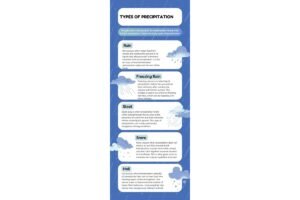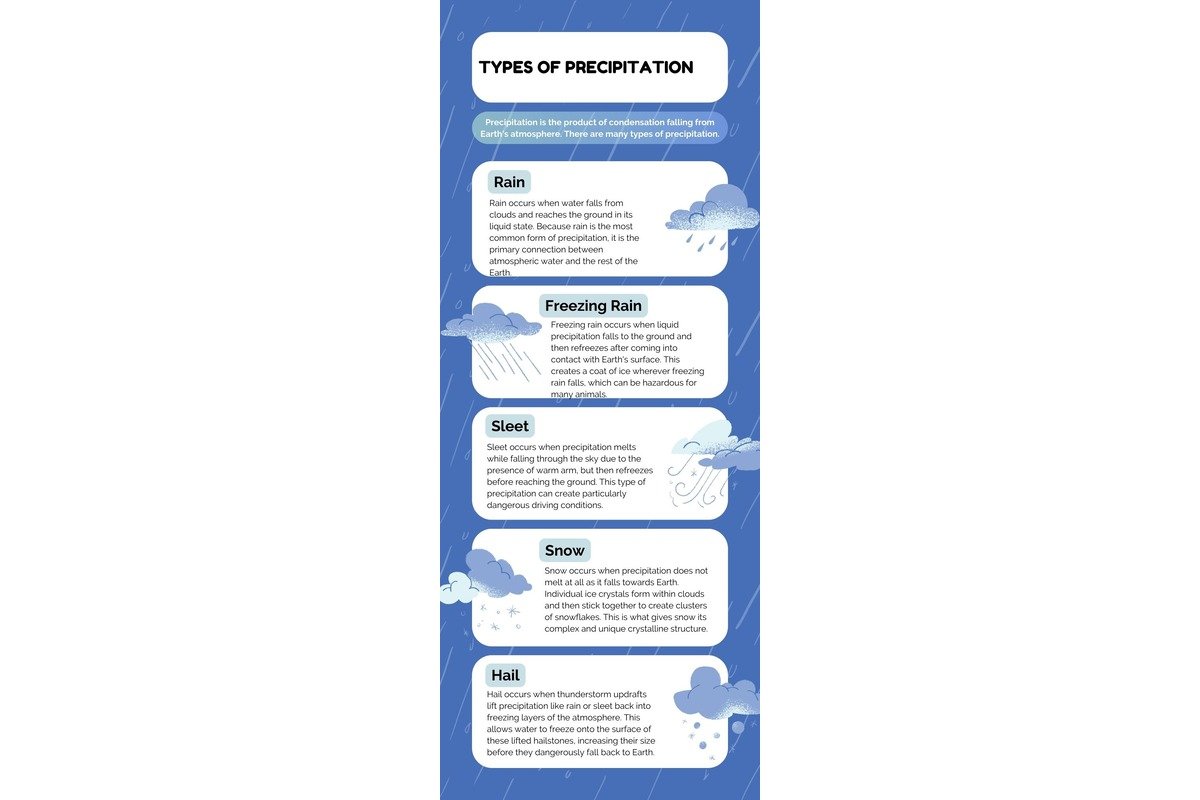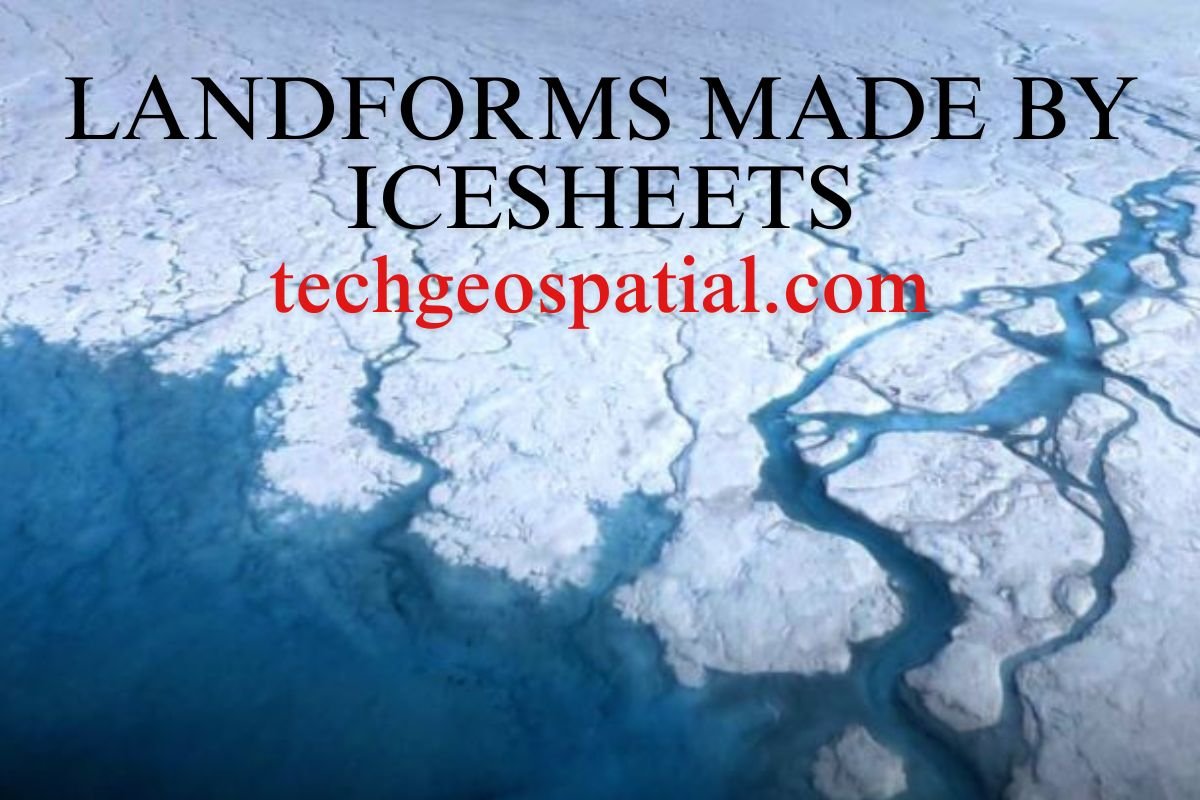Introduction:
Precipitation, the celestial gift from the heavens, is a phenomenon that captivates our senses and sustains life on Earth. From the rhythmic pitter-patter of raindrops to the silent descent of snowflakes, precipitation takes on various forms, each with its own unique characteristics and formation processes. In this comprehensive exploration, we delve into the intricacies of precipitation, elucidating its formation mechanisms, diverse forms, and significance in shaping the world around us.
Understanding Precipitation:
Precipitation refers to the process by which atmospheric water vapor condenses into liquid or solid particles and falls to the Earth’s surface. It is a vital component of the Earth’s water cycle, facilitating the transfer of water between the atmosphere and the surface.
Precipitation Forming Processes:
The formation of precipitation is governed by complex atmospheric processes that involve the interplay of temperature, humidity, and atmospheric dynamics. The primary mechanisms responsible for precipitation formation include:
- Condensation: Precipitation begins with the condensation of water vapor into tiny liquid droplets or ice crystals. This occurs when warm, moisture-laden air rises, cools, and reaches its saturation point, causing water vapor to condense around nuclei such as dust particles or aerosols.
- Cloud Formation: Condensed water vapor forms clouds, which act as reservoirs for water droplets or ice crystals suspended in the atmosphere. Clouds can range from wispy cirrus clouds at high altitudes to dense cumulonimbus clouds associated with thunderstorms.
- Coalescence: Within clouds, water droplets collide and merge through a process known as coalescence. Larger droplets form as smaller droplets collide and coalesce, eventually reaching sizes large enough to overcome air resistance and fall as precipitation.
- Ice Crystal Formation: In colder regions of the atmosphere, water vapor can directly transition into ice crystals without passing through the liquid phase. These ice crystals serve as the building blocks for snowflakes and other forms of solid precipitation.
Forms of Precipitation:

Precipitation manifests in various forms, each with distinct physical properties and formation mechanisms. The primary forms of precipitation include:
- Dew: Dew forms when moisture in the air condenses onto surfaces such as grass, leaves, or car windows during the night. It occurs when the temperature of these surfaces cools below the dew point, causing water vapor in the air to condense into droplets.
- Mist: Mist consists of tiny water droplets suspended in the air, giving it a hazy appearance. It occurs when warm, moist air comes into contact with a cooler surface or when moist air is cooled through evaporation, causing the water vapor to condense into tiny droplets.
- Fog: Fog is a dense mist that occurs when air near the ground cools to the point where it can no longer hold its moisture content, leading to condensation and the formation of tiny water droplets suspended in the air. Fog often reduces visibility and can form in various weather conditions, including humid conditions, cooling of air near water bodies, or as a result of radiation cooling at night.
- Frost: Frost forms when the temperature of surfaces, such as grass or car windshields, falls below the freezing point, causing water vapor in the air to directly transition into ice crystals. These ice crystals create a delicate, crystalline layer of frost on surfaces.
- Snow: Snow is formed when water vapor in the atmosphere directly transitions into ice crystals without passing through the liquid phase. These ice crystals accumulate to form snowflakes, which fall to the ground and accumulate as snow. Snowfall is common in colder regions and contributes to the winter landscape.
- Sleet: Sleet, also known as ice pellets, forms when raindrops pass through a layer of subfreezing air near the ground and partially freeze before reaching the surface. This results in small pellets of ice that can bounce upon impact.
- Glaze: Glaze, or freezing rain, occurs when rain falls onto surfaces with temperatures below freezing, causing it to freeze upon contact and form a thin layer of ice. Glaze can create hazardous conditions, particularly on roads and sidewalks.
- Hail: Hail forms within thunderstorm clouds when updrafts carry raindrops to heights where they freeze into ice pellets. These pellets may then be circulated within the cloud, accumulating layers of ice until they become too heavy to be supported by the updrafts and fall to the ground as hailstones.
- Drizzle: Drizzle refers to light, fine raindrops that fall steadily from the sky. It typically occurs in low-intensity precipitation events and can persist for extended periods, often resulting in damp conditions.
- Rain: Rain is liquid precipitation that falls from clouds in the form of larger water droplets. It can vary in intensity, from light showers to heavy downpours, and is essential for sustaining ecosystems, replenishing water sources, and supporting agricultural activities.
Significance of Precipitation:
Precipitation plays a pivotal role in shaping the Earth’s climate, hydrology, and ecosystems. It sustains agriculture by providing water for crop growth, replenishes freshwater sources such as rivers, lakes, and groundwater reservoirs, and maintains the balance of global water cycles. Additionally, precipitation influences weather patterns, regulates temperature, and contributes to the distribution of heat across the planet.
Impact on Ecosystems and Human Civilization:
Precipitation exerts profound effects on ecosystems, influencing vegetation patterns, biodiversity, and ecological processes. Adequate rainfall fosters lush forests, fertile soils, and thriving habitats for diverse flora and fauna. Conversely, extreme precipitation events, such as floods and droughts, can disrupt ecosystems, endanger species, and compromise ecological resilience.
In human civilization, precipitation shapes societal activities, economies, and infrastructure development. Communities rely on precipitation for drinking water, irrigation, hydropower generation, and industrial processes. However, excessive or insufficient precipitation can lead to water scarcity, crop failures, infrastructure damage, and socio-economic disruptions, underscoring the importance of understanding and managing precipitation-related risks.
Conclusion:
Precipitation, in its myriad forms, shapes the landscapes, climates, and ecosystems of our planet. From the gentle drizzle that nourishes thirsty soils to the ferocious hailstorm that tests the resilience of communities, precipitation is a force of nature that demands our respect and understanding. By unraveling the mysteries of precipitation formation and appreciating its diverse forms, we gain a deeper appreciation for the intricate workings of the Earth’s water cycle and the interconnectedness of all life on our blue planet.






good